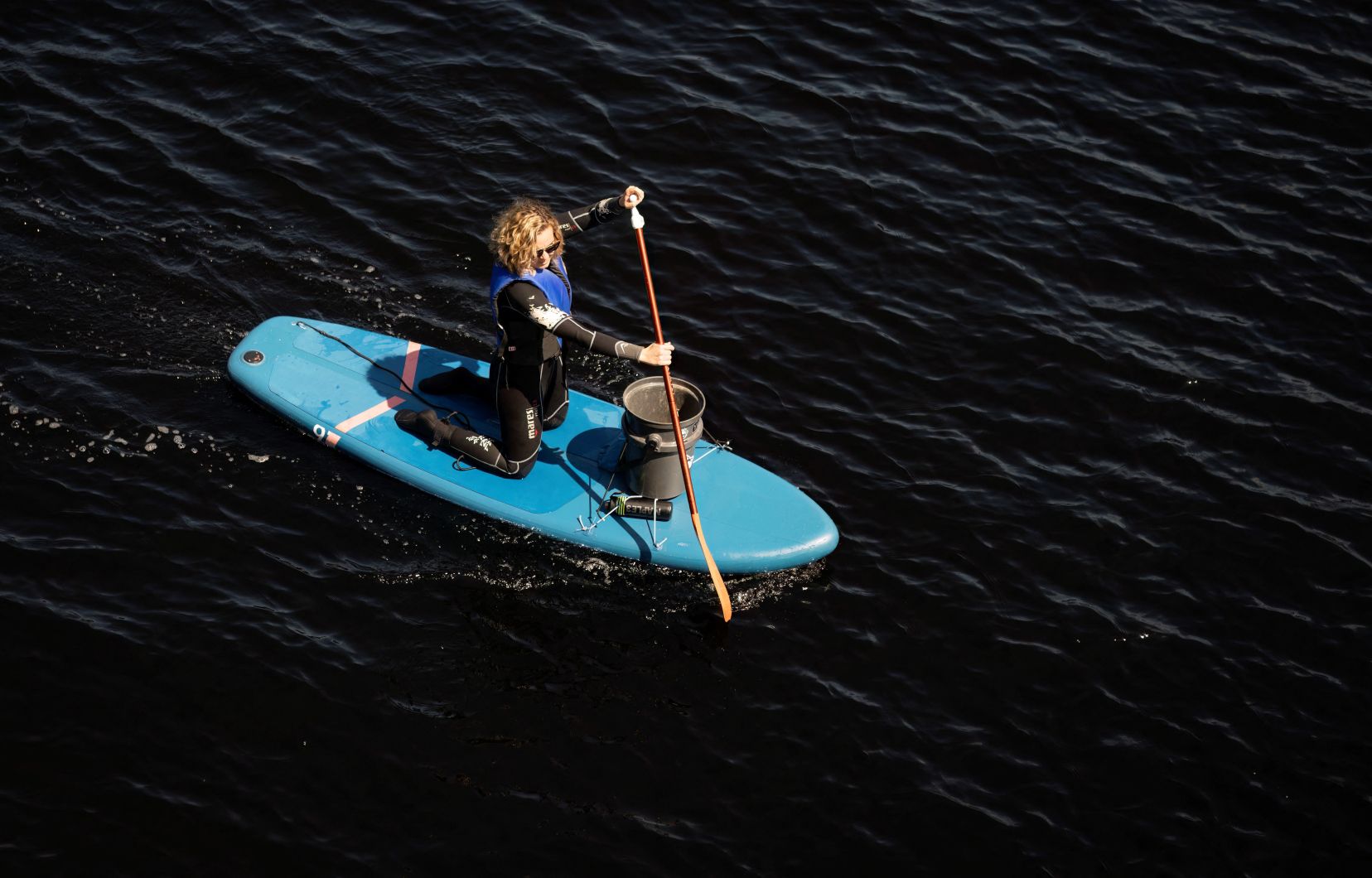On a blue tarp, garbage piles up. Tires, cups and cigarette butts contrast with the beauty of the Saguenay Fjord, a protected jewel of Quebec, where whales and belugas come to take refuge.
This sumptuous setting, which combines cliffs sculpted by glaciers and the Saint-Laurent River, has nevertheless been protected for 26 years and is far from any large city.
“It’s one thing to legislate to protect a territory, to make it a protected area, but then how do we maintain it?” asks biologist Anne-Marie Asselin before diving in search of waste.
With her team from the Blue Organization, she crisscrosses the brackish waters of the fjord to draw up a portrait of the pollution in this area.
The objective is twofold: to identify the waste most present in the environment in order to target the plastics to be banned from sale and “to predict which banks are most at risk of being polluted”, based in particular on currents.
Identify waste
On paddleboards, on foot or freediving, his crew, accompanied by volunteers, collects all kinds of waste in the bay of the village of Petit-Saguenay.
Under a blazing sun, Laurence Martel, project manager on plastic pollution, sorts them according to more than a hundred physical and spatiotemporal criteria, but also by brand in order to “measure the importance of the extended responsibility of producers”.
“The most popular is the cigarette butt, it is omnipresent,” explains this geographer by training, specifying that a single cigarette butt, due to the thousands of chemical compounds it contains, can contaminate up to 500 liters of water, the filter taking several years to degrade.
Over the past five years, their research has revealed a worrying trend: the concentration of plastic waste is increasing significantly towards the Gulf and the Atlantic, “suggesting a shift in waste from urban areas downstream.”
“Often, the smallest plastics are the ones that pollute the most,” adds the young researcher, looking at the water sparkling in the sun.
Sentinel species
As the waste disintegrates, it becomes microplastics. Most often invisible to the naked eye, these particles, some of which have been found as far away as Antarctica, are made of polymers and other toxic compounds that vary between five millimeters and one thousandth of a millimeter.
They are found throughout the food chain of marine fauna, particularly at its base, among invertebrates.
The crew catches and analyzes these “sentinel species” during each cleaning operation.
“If your mussels and invertebrates start to suffer, that could be a sign that the health of the ecosystem is also declining,” says Miguel Felismino, an engineer and doctoral student at McGill University.
Sitting on the catamaran’s net, the young researcher measures, photographs and then meticulously arranges the mussel specimens which he will then analyze in the laboratory in order to understand the effects of these particles on their size or composition.
But his quest for microplastics doesn’t stop there. Using a homemade pump made up of a generator and a few pipes, placed at the front of the boat, he also collects surface water and sediment from the seabed.
“Touching people differently”
With this mission, the Blue Organization wishes to provide a complete vision of the “plastic cycle” in protected areas such as the Saguenay–St. Lawrence Marine Park.
But to protect these ecosystems, the solution is “also to trigger changes in behavior,” thinks Anne-Marie Asselin, who called on sound and literary creators to “raise awareness among other audiences.”
Whether creating music from natural sounds or making a “literary translation” of this scientific research, the idea is to “touch people differently” while leaving an indelible mark for future generations.
“With climate change, the soundscapes associated with certain territories are set to evolve,” says artist Emilie Danylewick, just before plunging her hydrophone into the water.
This mission is also a “way of preserving the current memory of the territory at the sound level,” she confides.
